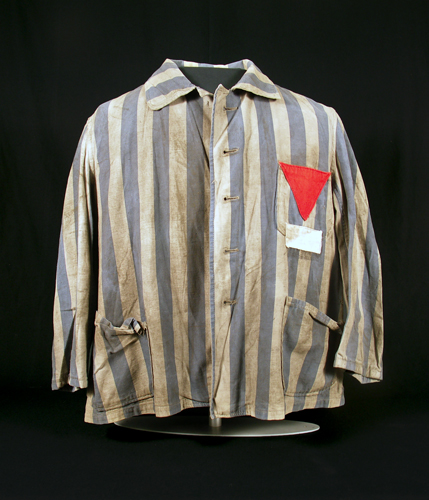December 11th, 2017–
Each act of passive and active resistance was a potential threat to the Third Reich. Not only could these acts physically impede the progress of Nazi plans, but they could also challenge the ideological basis of the Nazi regime. Those who stood in opposition to the government, whether through resistance or through their mere existence, were labeled “enemies of the state.” And as “enemies,” they had no place in German Society.
To quell opposition, Nazis imprisoned those deemed “undesirable” in concentration camps. Concentration camps were enclosed camps, ranging in size, where prisoners were detained without regard to legal process or their individual rights. The first concentration camp established under the Third Reich—Dachau—opened in March 1933, just months after Hitler became Chancellor of Germany. Dachau, named after the German town it inhabited, was originally used to imprison political prisoners, individuals whose political beliefs or affiliation challenged the Nazi government.
Using Dachau as a model, the Nazis continued to expand their concentration camp system. By 1939 there were six major concentration camps in the Third Reich. The number of camps only continued to increase as Nazis built new camps in areas they invaded in order to accommodate a growing prisoner population. By this point, the government was also imprisoning other groups they had deemed “undesirable,” including Jehovah’s Witnesses, Roma, accused homosexuals, “asocials,” habitual criminals, and Jews, as defined by the Nuremberg Race Laws. By the end of the war prisoners inhabited over 40,000 known concentration camps under Nazi control.
By the end of the war prisoners inhabited over 40,000 known concentration camps under Nazi control.
Conditions in concentration camps were poor. Camps were barren and often lacked adequate facilities for prisoners. In these harsh environments, prisoners had limited access to food, inadequate clothing; and experienced tight quarters, dirty living conditions, rampant illness, and cruelties inflicted by camp staff. While enduring these conditions, prisoners were also often required to carry out forced labor, often consisting of arduous manual labor like building or expanding concentration camps.
Prisoners were also often required to wear a uniform with a blue and grey striped pattern. Prisoner groups were distinguished by an identifying, colored, triangular patch worn on this uniform, which indicated how the Nazis categorized them. This prisoner’s jacket was acquired by a liberator, who grabbed it from a pile of uniforms and donated to the museum by his brother. The full uniform consists of a jacket, cap, and pants—though it is unlikely all three pieces belonged to the same prisoner. This jacket would have been worn by a male prisoner, who was assigned a jacket, top, pants, and a cap. Women were assigned a jacket, dress, and kerchief. This jacket has a red triangle patch, which indicates it was worn by a political prisoner. The white patch beneath this triangle appears to have had two prisoner numbers on it, meaning it was worn by at least two different prisoners. Though we do not know much about the prisoners who wore this jacket, having this artifact in our collection still helps us to better understand life in concentration camps.
This artifact and many others can be seen on our online catalog.

